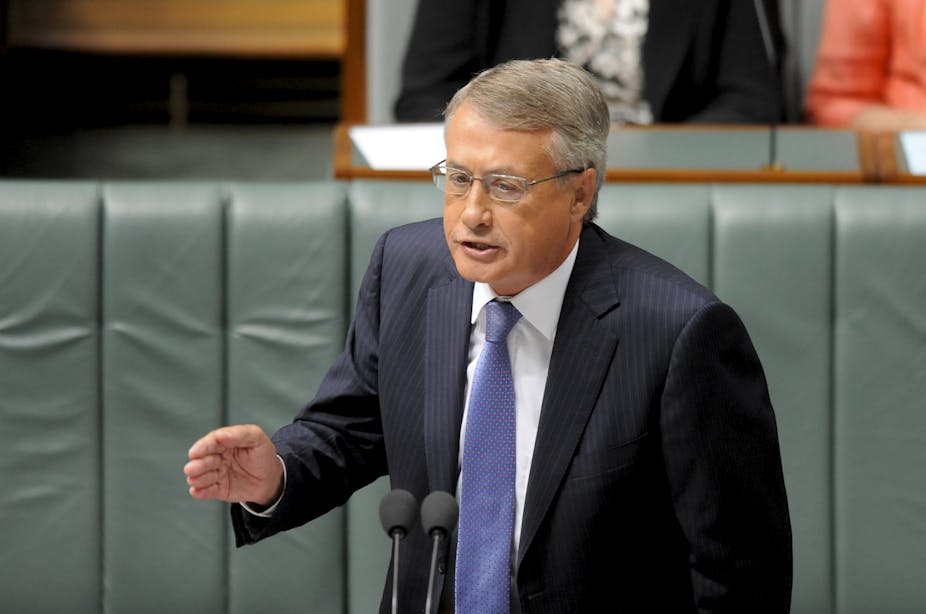How did the Australian economy, which boasts the best performance of the major advanced economies, end up with an estimated budget deficit of A$19 billion this year and an estimated debt of $178 billion?
The answer, of course, is quite simple – the failure of successive governments to live within their means.
Last week I pointed out how in the latter years of the Howard government, the Costello budgets included a raft of tax cuts and handouts which eroded the healthy surplus. This was due to exceptional falls in unemployment, jobs growth and wages growth which greatly increased tax receipts while somewhat eroding the tax base.
Rudd’s two-and-a-half year leadership of the Labor government was characterised by high spending, high debts and ill-fated economic policies. There were also a large number of policy back-flips and policy failures. The period was also dominated by the global financial crisis (GFC) and Australia was not alone in having to recalibrate its economic strategies to respond to what has been a significant, world-wide phenomenon.
While the idea of stimulus spending was generally supported, the amount and form of the spending has been the subject of considerable debate. Rudd took office in 2007 with net government saving of almost $45 billion and left office in June 2010 with an estimated net debt of almost $42 billion.

Far from addressing the budget deficit Swan has delivered more budget deficits through failing to curb spending and/or widen the tax base, despite the Minerals Resource Rent Tax and the Carbon Tax.
Among the expenditure cuts and tax savings is the axing of an $1.8 billion increase in family tax benefits, due to start on July 1, which would have been worth between $300 to $600 a year for families. The Baby Bonus will now be paid as part of the means tested Family Tax Benefit A payments.
An income tax cut proposed for 2015-16 will be deferred. The tax cut was part of the carbon scheme compensation package and would have increased the tax-free threshold from $18,200 to $19,400. Savings of $900 million will be made over four years from changes to superannuation tax arrangements by taxing earnings of more than $100,000 on superannuation pensions and annuities will be taxed at 15%, instead of being tax-free.
Public service cuts over the next four years, including job cuts, will save $580 million, but it is well-known that meaningful savings in government expenditure come from cutting programs rather than public servants.
Although the government needs to pay for its additional expenditure promises there is also the need to address the underlying structural problem of reducing existing expenditure. All this is at a time when the carbon tax, Minerals Resource Rent Tax, and just about every tax, is not raising the expected revenue and Treasury’s forecasting performance is not looking good.
Massive revenue write-downs have been made to tax receipts, with a shortfall of around $17 billion this financial year, more than $20 billion the following year and $60 billion over the next four years. There are $43 billion in savings promised through a range of cuts.
A number of big ticket expenditure items are likely to blow out from original estimates. The National Broadband Network (NBN) is a very costly project for which no one knows the eventual true cost with any accuracy. The new tax (sorry Medicare levy) will only meet 40% of an estimated cost of DisabilityCare, (formerly the NDIS) which will inevitably blow out (if the experience of the rest of healthcare is any guide). The Gonski recommendations may very well be excellent, but few really understand them.

No one trusts the estimates and most think that the government won’t be around much longer to implement even short-term measures, never mind the “the savings to fully fund priority investments for 10 years and beyond” described by the Treasurer.
According to Swan we are an economy in transition. And how is this transformation to occur? The resources boom moves from its investment phase to production (if prices hold up). Our region is the fastest growing in the world providing opportunities for Australian farmers, manufacturers and service industries. This will require a highly skilled, educated workforce (hence Gonski reforms - although it would seem the more highly skilled university students can fend for themselves with $2.3 billion to be cut from universities).
As Swan put it,
“You don’t want to find yourself in the fastest growing region in the world, with yesterday’s economy.”
Excuse me, but haven’t we been in the fastest growing region for some time now? Shouldn’t this investment have been done years ago?
And,
“Cutting to the bone puts Australian jobs and our economy at risk, something this Labor government will never accept.”
No one is asking for drastic cuts, but simply for government to live within its means.

